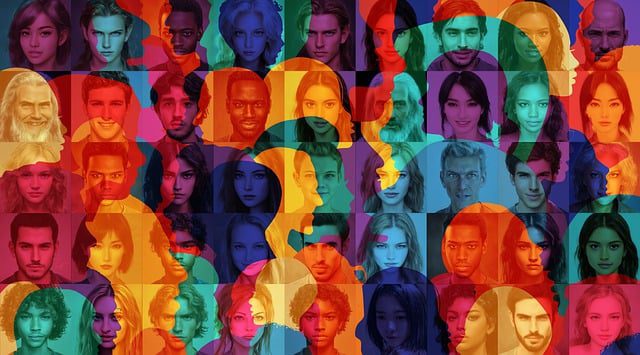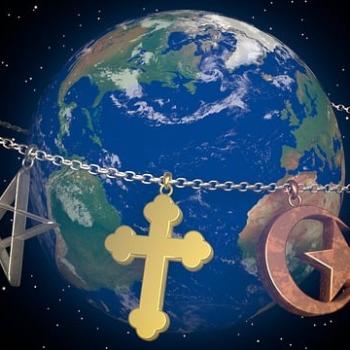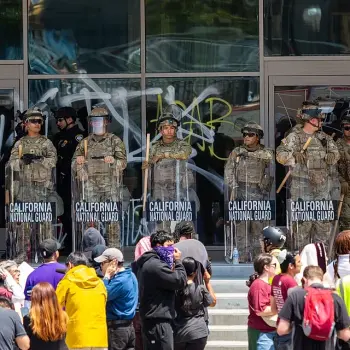Those of you of a certain age might remember when your local congregation included people from all walks of life, all income levels, and both political parties. Bankers, farmers, business owners, factory workers, lawyers, secretaries, teachers, retired folks, young families, Democrats, and Republicans all worshiped together in the same pews.
Political differences might manifest themselves in good-natured teasing. (“You Democrats always want to raise the church budget.” “I don’t make enough money to be a Republican.”) But most people, for all of their differences, got along, except for the occasional spat about the color of the new carpet or the choice of music, but even then, the different factions did not usually break along socio-economic lines.
The exception to this social “inclusion” would probably be race. If yours was a white congregation, it probably didn’t have black members. And if yours was a black congregation, it probably didn’t have white members. But both white and black churches tended to be diverse when it came to social classes. My impression is that racial segregation in churches is lessening, at least in churches I’ve been to lately.
Churches used to help hold society together, a place for people of different social classes and political beliefs to get to know each other. But it isn’t that way so much any more, to the detriment of our democracy and our national unity.
So says social scientist and Baptist minister Ryan Burge–whom I find myself citing more and more for his fascinating research–in his Wall Street Journal article (behind a paywall) Houses of Worship Shouldn’t Mirror the Class Divide.
He repeats the counter-intuitive fact that today “the people most likely to be found at religious services are the well-educated and the well-to-do.” He cites data from 2022 showing that 30% of Americans with a college degree making at least $60,000 per year go to church every week. Among those with only a high school diploma who make less than $30,000, only 20% are in church every week.
Also, churchgoers are now mostly politically conservative. In 1978, he says, 50% of weekly churchgoers were Democrats, with 40% being Republicans. Today, 60% are Republicans and only 25% are Democrats. Looking at the issue from another angle, Burge says that in 2021, 51% of people who consider themselves politically liberal had no religious affiliation. Only 12% of conservatives had no religious affiliation.
Thus, churches are becoming more homogenous; specifically, more middle class and more politically conservative. Here, according to Burge, is why this is a problem not just for religion but for secular society:
One of the strongest predictors of increased economic mobility is whether an individual has access to economically diverse social spaces. People at the lower end of the economic spectrum benefit greatly when they can build personal relationships with those who have higher incomes.
In an article published in the journal Nature last year, a team of researchers examined the Facebook connections of over 70 million users to find where they were most likely to encounter people with a higher income than their own. Neighborhoods, schools and workplaces turned out to offer very little economic diversity. The one venue that did was houses of worship. But as American religion is increasingly dominated by educated, middle-class worshipers, the likelihood that a person facing financial struggles will show up for services is growing smaller by the year.
Furthermore, he says, “Social scientists theorize that coming into direct contact with a member of a different group will reduce intolerance, prejudice and skepticism toward that group.”
Burge recommends that churches sponsor gatherings that are purely social–cookouts, carnivals, farmers’ markets–for the local community. These would be “horizontal” events, helping people get to know each other and interact with each other. The “vertical” dimension–that is, the people’s relationship with God–“can (and should) come later.”
He concludes, “Religious leaders need to remember the crucial role that houses of worship play in holding our society together.”
Some good points, but I have some questions and comments:
(1) If churches are both more politically conservative and have become havens for the well-educated and affluent, why do other studies find that the well-educated and affluent are the new Democratic base? And, conversely, that the new Republican base consists of the white working class, which goes to church less than any other demographic?
I suspect that the answer has to do with the larger “de-churching” of America. In this same article, Burge cites the statistics that in 1972, only 5% of Americans said they had no religious affiliation. In 2021, the percentage is 30%.
It would seem that churches are losing members from both ends: well-educated, affluent progressives and less-educated, non-affluent conservatives.
There must be enough well-educated, affluent conservatives who go to church to account for these statistics.
(2) I’m uneasy at the principle of promoting social interactions while letting the religious content come later. What are these socially-different people supposed to interact about? What they have in common is the universal need for God–their sinfulness, guilt, and emptiness, which Christ atones for, forgives, and fills. The reason the bank president and the janitor who swept his floors knelt at the same altar is that they both have the same need for the same Savior.
In purely social events, people hang out with their own kind. Even, I suspect, when a church organizes the event. It’s in the religious part of what the church has to offer that the unity happens.
(3) The church growth methodology that has become ubiquitous in contemporary Christianity has intentionally contributed to homogenization.
As the Wikipedia article on Donald McGavran, the founder of the church growth movement, says,
Based on his lectures in Eugene and later at Fuller, McGavran published the book Understanding Church Growth (1970). In the work, McGavran articulated a key feature of his church growth theory, known as the “homogenous unit principle.” Drawing from his experiences in India of mass movements, the homogenous unit principle reasoned that individuals are more likely to convert to Christianity en masse when they share similar demographics.
Image by Gerd Altmann from Pixabay














